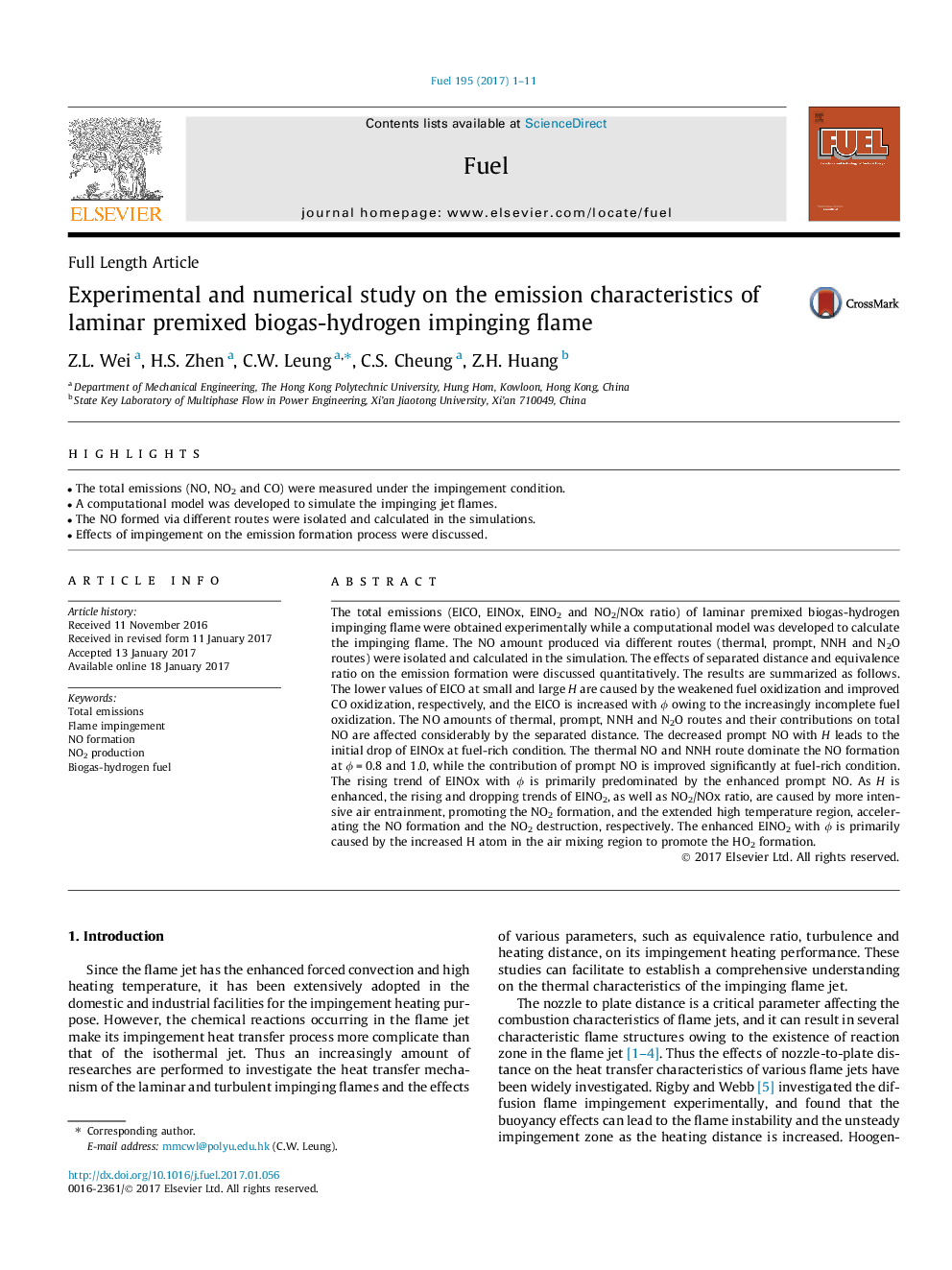| Article ID | Journal | Published Year | Pages | File Type |
|---|---|---|---|---|
| 6475338 | Fuel | 2017 | 11 Pages |
â¢The total emissions (NO, NO2 and CO) were measured under the impingement condition.â¢A computational model was developed to simulate the impinging jet flames.â¢The NO formed via different routes were isolated and calculated in the simulations.â¢Effects of impingement on the emission formation process were discussed.
The total emissions (EICO, EINOx, EINO2 and NO2/NOx ratio) of laminar premixed biogas-hydrogen impinging flame were obtained experimentally while a computational model was developed to calculate the impinging flame. The NO amount produced via different routes (thermal, prompt, NNH and N2O routes) were isolated and calculated in the simulation. The effects of separated distance and equivalence ratio on the emission formation were discussed quantitatively. The results are summarized as follows. The lower values of EICO at small and large H are caused by the weakened fuel oxidization and improved CO oxidization, respectively, and the EICO is increased with Ï owing to the increasingly incomplete fuel oxidization. The NO amounts of thermal, prompt, NNH and N2O routes and their contributions on total NO are affected considerably by the separated distance. The decreased prompt NO with H leads to the initial drop of EINOx at fuel-rich condition. The thermal NO and NNH route dominate the NO formation at ÏÂ =Â 0.8 and 1.0, while the contribution of prompt NO is improved significantly at fuel-rich condition. The rising trend of EINOx with Ï is primarily predominated by the enhanced prompt NO. As H is enhanced, the rising and dropping trends of EINO2, as well as NO2/NOx ratio, are caused by more intensive air entrainment, promoting the NO2 formation, and the extended high temperature region, accelerating the NO formation and the NO2 destruction, respectively. The enhanced EINO2 with Ï is primarily caused by the increased H atom in the air mixing region to promote the HO2 formation.
